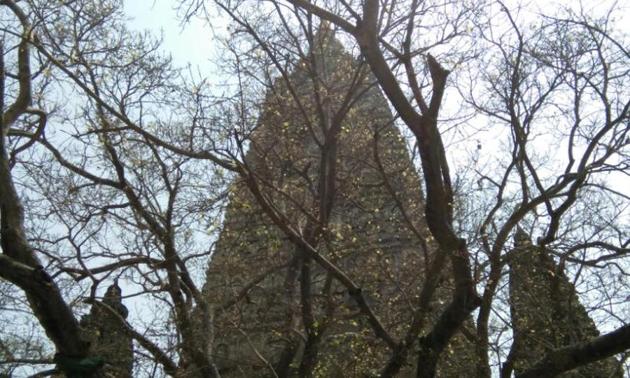Gaya’s Bodhi tree is in good health: BTMC secy
Scientists from the Dehradun-based Forest Research Institute will examine the sacred tree in Bodh Gaya to examine the reason behind the delay in sprouting of new leaves.
The Bodhgaya Temple Management Committee (BTMC) secretary N Dorjee on Saturday claimed that the sacred Mahabodhi tree in the southcentral Bihar Buddhist pilgrimage town of Gaya was in sound health.

Talking to reporters, Dorjee said the delay in sprouting of new leaves was a usual phenomenon. However, the BTMC was in touch with the Forest Research Institute (FRI), Dehradun, and a team of scientists would reach later this month to examine the tree and find out the reason behind the delay in sprouting of new leaves, he said.
The much revered tree on the premises of the Mahabodhi Mahavihar is considered as a direct descendant from the original specimen planted in 288 BC. It was under this tree that Lord Buddha is said to have attained enlightenment.
READ: Gaya’s Bodhi tree fails to sprout leaves, raises BTMC concern
The BTMC secretary admitted that one of the twigs near the Vajrasana, believed to be the specific site of Buddha’s enlightenment, had dried and was almost dead. Dorjee said the FRI scientists would try to infuse fresh life into the dying twigs.
As per an agreement between the BTMC and the FRI, the temple management spends Rs 5 lakh annually and FRI scientists visit here every three-four months to examine the condition of the tree and undertake treatment, if necessary, he said.
In June, 2013, the BTMC members and the FRI scientists had noticed that many leaves had turned pale and those fresh were also falling. The scientists, after detecting pests, had undertaken treatment of the tree, spraying micro-nutrient supplement with insecticides. Since then, the Bodhi tree was in sound health, Dorjee said.
When asked about the reason behind the delay in sprouting leaves, the secretary said: “Although I am not an expert, I feel unusual weather conditions, with temperature ranging between 40 and 41 degree Celsius, might be the reason. We are contemplating to prepare an annual chart of the tree to record its health periodically.”
FRI scientists, led by NSK Harsh, had examined the tree last November and said that it looked in very good shape with leaves showing rich green colour. The scientists had then gone for a chemical treatment, Dorjee said, adding that fresh leaves would sprout very soon.
“They (new leaves) have already begun appearing in some of the branches of the tree,” the BTMC secretary signed off.





